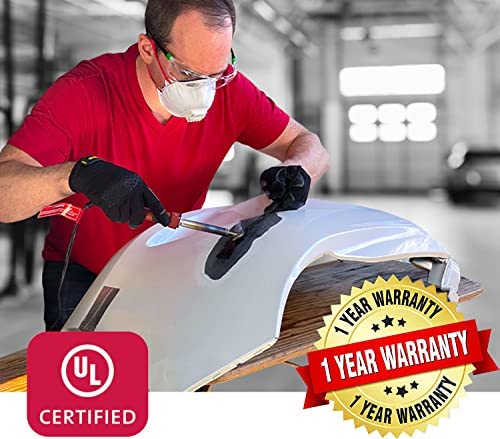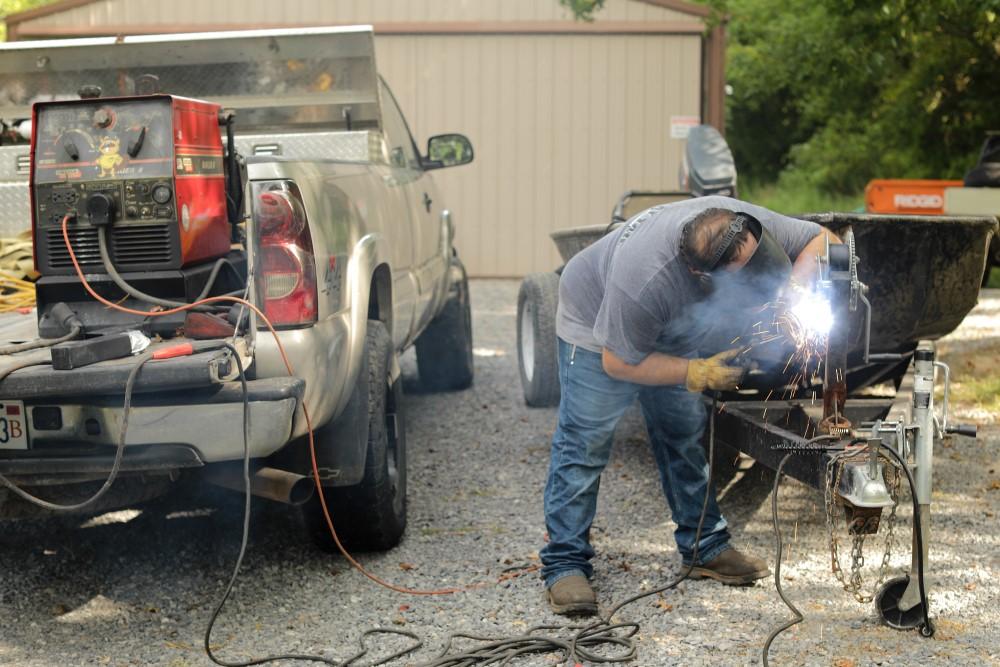Everything about Welding: Trick Insights Into Techniques and Best Practices for Success
Welding includes a range of strategies, each matched for details products and applications. Comprehending these approaches, such as GMAW, SMAW, and TIG, is important for accomplishing ideal outcomes. The best devices and safety and security techniques can not be neglected. As prep work and repairing play important functions in the welding process, mastering these elements can greatly enhance the top quality of the last item. What are the crucial variables that assure a successful weld?
Comprehending Different Welding Strategies
Welding methods encompass a range of methods, each suited to specific applications and materials. Among the most typical methods are Gas Metal Arc Welding (GMAW), Protected Metal Arc Welding (SMAW), and Tungsten Inert Gas Welding (TIG) GMAW, additionally called MIG welding, is preferred for its rate and convenience, making it excellent for thin products. SMAW, or stick welding, is favored for its simplicity and performance in outside environments, specifically with thicker metals. TIG welding provides precision and control, making it suitable for detailed job and non-ferrous metals (Montana Mobile Welding and Repair Fabrication). Each strategy has its unique benefits and factors to consider, allowing welders to select the very best method based on the job's requirements, material type, and preferred results. Recognizing these strategies is vital for effective welding
Crucial Welding Equipment and Devices
While different welding strategies need specific skills, the right tools and devices are just as essential for accomplishing top quality outcomes. Essential welding equipment includes welding equipments, which differ relying on the strategy-- such as MIG, TIG, or stick welding. Protective gear, including headgears, handwear covers, and aprons, warranties safety and security and convenience during the process. In enhancement, clamps and components help protect materials in position, making certain precision in welds. Consumables like welding poles, cord, and shielding gas are also vital parts that influence the top quality of the weld. Devices such as cutters and grinders promote surface area prep work and post-weld ending up, adding to an expert result. Spending in high-grade devices ultimately enhances the effectiveness and performance of welding tasks.
Safety And Security Practices in Welding
Appropriate security methods are vital in the welding industry to shield employees from prospective threats. Welders have to use ideal individual safety devices (PPE), consisting of helmets with proper shading, handwear covers, and flame-resistant clothing. Appropriate air flow is vital to decrease exposure to damaging fumes and gases created during the welding process. Additionally, workers need to be trained in the correct handling of welding equipment to avoid accidents. Fire precaution, such as maintaining combustible products far from the welding area and having fire extinguishers conveniently available, are necessary. Routine examinations of devices and work spaces can help recognize prospective risks prior to they bring about mishaps. By adhering to these security methods, welders can develop a safer working setting and minimize threats related to their trade.
Preparing Products for Welding
Preparing materials for welding is a crucial action that significantly influences the quality and integrity of the final item (Montana Mobile Welding and Repair Belgrade Welding). Proper prep work includes cleaning up the surfaces to remove impurities such as oil, corrosion, and dirt, which can endanger the weld. Methods such as grinding, fining sand, or utilizing solvents are generally employed to accomplish a clean surface area. Furthermore, ensuring that the products fit together comfortably is vital; gaps can cause weak welds. It's also vital to take right into account the positioning and positioning of the parts, as this will impact the convenience of welding and the last end result. Selecting the suitable filler product and guaranteeing compatibility with the base metals is important for achieving solid, resilient welds.
Tips for Achieving High-Quality Welds
Accomplishing top quality welds requires focus to information and adherence to best techniques throughout the welding procedure. Appropriate joint prep work is important, making certain surfaces are cost-free and tidy from contaminants. Choosing the proper filler material and welding method based upon the base steels is vital for suitable bonding. Maintaining consistent traveling rate and angle while welding can advertise and avoid flaws harmony. Additionally, regulating warm input is necessary; too much heat can bring about warping and compromised joints. If necessary, frequently evaluating the welds throughout the procedure allows for instant adjustments. Lastly, employing proper post-weld therapies, such as cleansing and anxiety relief, can enhance the longevity and integrity of the weld, ultimately making sure an effective outcome.
Repairing Usual Welding Issues
Welding commonly offers difficulties that can impact the quality and honesty of the final item. Usual issues such as porosity, inconsistent weld grains, and getting too hot can arise, each calling for details troubleshooting methods. Understanding these troubles is crucial for welders to enhance their abilities and attain optimal results.
Porosity Issues Explained
Porosity can typically be ignored, it remains a crucial problem in welding that can compromise i was reading this the honesty of a finished item. Porosity refers to the visibility of small gas pockets within the weld grain, which can compromise the joint and lead to premature failing. This problem commonly develops from contaminants, dampness, or improper securing gas protection during the welding process. To minimize porosity, welders ought to verify that the base materials are dry and clean, use ideal protecting gases, and maintain consistent welding specifications. On a regular basis inspecting the devices and atmosphere can likewise assist recognize potential problems prior to they show up in the weld. Dealing with porosity properly is vital for attaining strong, long lasting welds that fulfill quality requirements.

Inconsistent Weld Beans
Irregular weld beads can significantly impact the top quality and toughness of a completed product. Various variables contribute to this problem, consisting of incorrect traveling speed, inaccurate amperage settings, and inconsistent electrode angles. When the welder moves too quickly, a bead may appear slim and lack infiltration, while moving also slowly can create extreme buildup. In addition, making use of the wrong amperage can cause either undercutting or too much spatter, both of which compromise weld honesty. The welder's method, such as inconsistent torch activity, can likewise lead to irregular bead look. To reduce these troubles, welders ought to focus on preserving steady, regulated movements and ensuring appropriate devices settings to achieve uniformity in their welds. Uniformity is crucial to attaining reputable and strong welds.
Overheating and Warping Issues
Excessive warm during the welding process can bring about significant overheating and buckling problems, influencing the structural honesty of the workpiece. These troubles typically materialize as distortion, which can endanger alignment and fit-up, making further setting up challenging. Aspects contributing to overheating include the selection of welding specifications, such as voltage and take a trip speed, along with the kind of product being welded. To minimize these problems, welders ought to maintain constant traveling rate and suitable warm input while monitoring the work surface temperature. In addition, pre-heating or post-weld warm treatment can help minimize tensions triggered by quick air conditioning - Montana Mobile Welding and Repair Belgrade. Routine assessment and adherence to best practices are important in protecting against getting too hot and ensuring the longevity and reliability of you can check here bonded frameworks
Frequently Asked Inquiries
What Are the Profession Opportunities in the Welding Industry?
The welding market supplies diverse occupation possibilities, consisting of positions as welders, engineers, assessors, and instructors. Specialists can function in production, building, aerospace, and auto markets, gaining from solid need and affordable incomes in various duties.
How Can I Boost My Welding Rate Without Sacrificing High Quality?
To boost welding speed without giving up high quality, one ought to exercise effective strategies, maintain tools, maximize settings, and improve hand-eye sychronisation. Routine training and looking for comments can likewise substantially contribute to achieving quicker, high-grade welds.
What Certifications Are Readily Available for Welders?
Many certifications exist for welders, consisting of those from the American Welding Society (AWS), the National Facility for Building Education and Research Study (NCCER), and various industry-specific companies. These qualifications enhance employability and demonstrate skill efficiency.
How Does Welding Influence the Residences of Metals?
Welding affects the residential or commercial thermocouple welder properties of metals by modifying their microstructure, which can lead to modifications in toughness, ductility, and solidity. Warm input and air conditioning rates during the process considerably impact these product features.
Can I Weld Dissimilar Metals Together?
